| s/y Nine of Cups Hagerman Fossil Beds National Monument, Idaho May 2012 |
More National Parks and Monuments?
More American Odyssey trip?
Roadside Americana?
Birds of North America?
Wildflowers of North America?
More American Odyssey trip?
Roadside Americana?
Birds of North America?
Wildflowers of North America?
| Hagerman Fossil Beds National Monument is most famous for the horse that is Idaho's state fossil. No other fossil beds preserve such varied land and aquatic species from the Pliocene Epoch period. These plants and animals represent the last glimpse of that time that existed before the Ice Age, and the earliest appearances of modern flora and fauna.Eight species found here are found nowhere else in the world and 43 species were found here first. To protect these fossil beds which still produce over 3,000 new fossil fragments each year, the area was declared a national monument in 1988. |
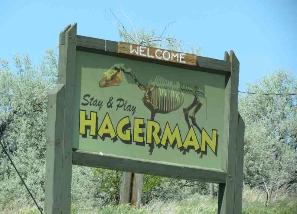
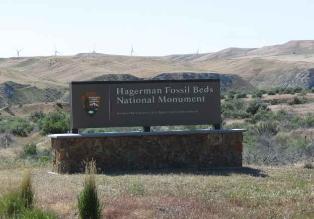
| The Oregon Trail crosses the southern portion of Hagerman Fossil Beds. The Monument is one of only four units in the National Park system that contains parts of the Oregon National Historic Trail. Ruts for the trail are still quite visible. |
| Did you know horses evolved in North America? The Hagerman Horse, Equus Simplicidens, was the first true horse though its bones most closely resembled Grevy’s zebra. . |
| Hagerman is home to over two hundred different species of fossil plants and animals: including Sabertooth Cat, Mastodon, Bear, Camel, Ground Sloth, and many other species. |
| The little town of Hagerman, ID is home to the Visitor Center for the National Monument as well as the temporary location for the Minidoka National Historic site. |
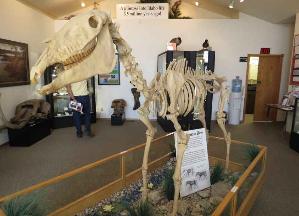
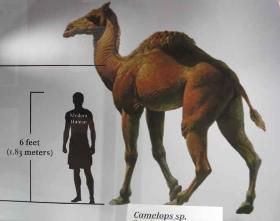
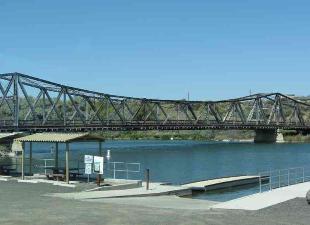
| The actual monument is outside of town and not accessible to the public. The 600' bluffs seen from the Snake River Overlook provide the best view of the sedimentary layers. |
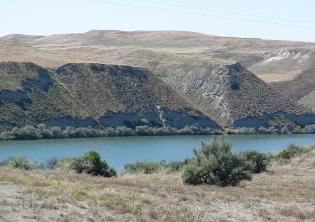
| About 14,300 years ago, the massive Bonneville flood carved a deep valley through what is now southeastern Idaho. The raging water ripped into the earth and scattered massive boulders called “melon gravel” across the landscape. The flood exposed a thick layer of sedimentary rock that contains the fossilized remains of 220 different animals and plants. Among the fossils, scientists unearthed 30 complete skeletons of “Hagerman Horses,” a distant ancestor of the horses we ride today. |
| We crossed the historic one-lane Owsley Bridge, a suspended metal bridge built in 1920 and used in 1929 by the Smithsonian paleontological team for making the first scientific excavations here at Hagerman. |
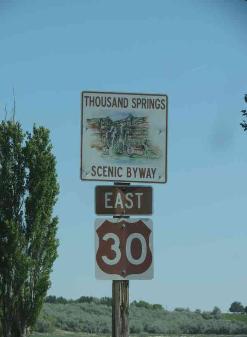
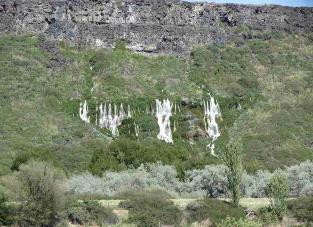
| This area is also famous for the scenic Thousand Springs. An aquifer creeps through an area of several thousand square miles under southern Idaho's porous volcanic rock before emerging as cascades along this scenic route.. |
| Housed in the same building as the Hagerman Fossil Beds NM, a tiny room is dedicated to the Minidoka National Historic Site. Minidoka was a war relocation center where Japanese Americans were evacuated during 1942 to 1945, the war years. Minidoka was home to some 9,000 residents, all Americans with Japanese descents coming from the states of Oregon, Washington and Alaska. It became a National Historic Site in 2001. |
| Minidoka National Historic Site |
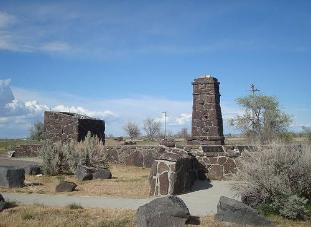
| Entrance to the Minidoka National Historic Site |

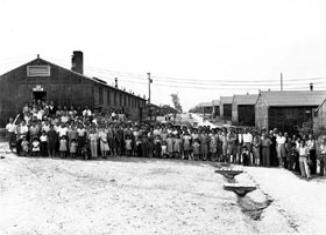
| A black and white photo of the prison camp in 1943 taken from the archives. |
Next stop...Craters of the Moon
National Monument. Come on along.
National Monument. Come on along.